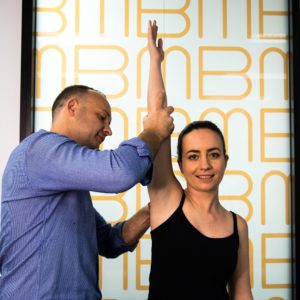 Like any muscle there are many ways you can injure your Rotator Cuff. The tendons particularly are prone to injury as they are a high functioning component of shoulder stability. Over time or through traumatic events you can tear the Rotator Cuff leading to pain, inflammation and loss of function. Lets look at the mechanisms a little closer.
Like any muscle there are many ways you can injure your Rotator Cuff. The tendons particularly are prone to injury as they are a high functioning component of shoulder stability. Over time or through traumatic events you can tear the Rotator Cuff leading to pain, inflammation and loss of function. Lets look at the mechanisms a little closer.
To read more about what actually is the Rotator Cuff read my first blog (Part One) on this topic here.
How do we injure the Rotator Cuff?
One of the most common injuries we see in clinic is through an outside force on the shoulder, trauma. The high incidence of sports being played by our clientele means we see our fair share of shoulder trauma. Trauma could be anything from a fall onto an out stretched hand placing increased force through the shoulder joint, or wrenching your shoulder into an awkward position, like in a rugby tackle. Subluxing or dislocating your shoulder also leads to Rotator Cuff injury as there are high forces placed trough the shoulder causing a loss of stability.
Less commonly we see overuse injuries, particularly in repetitive gym lifting or push pull exercises. Throwing activities like javelin can wear down the cuff, as can weekend activities like home renovations requiring lots of repetitive shoulder movement (hammering and wall papering) also cause Rotator Cuff injury.
The highest proportion of Rotator Cuff tears are found from natural body changes like degenerative aging and wear and tear. The body is not as capable at replenishing damaged fibres as we age, thus resulting in more and more minor tears which eventually become painful. Compounded with this is the reduced blood supply to tendons, which means the less abundant cells get less nutrients to reproduce fibres to meet the body normal turn over.
Different types of Rotator Cuff injury:
Not all tears are the same. Different sports and hobbies place different demands on the shoulder, whether its high velocity movements like racquet sports, high impact contact sports, repetitive loading like garden pruning or otherwise, no two shoulder injuries are the same, and its your experience of this injury that makes it unique.
Tears are either partial thickness which means you have torn some of the muscle fibres, or full thickness which means you have torn all of the fibres. The older you are the more susceptible you are to injuring your Rotator Cuff.
How do I know if I have a Rotator Cuff injury?
Well usually pain is the biggest give-away. Usually you notice pain in the outer part of your shoulder, over the ball and socket joint. The second biggest symptom is loss of function. This is usually specific to a couple of moments like tucking in your shirt, combing your hair, applying makeup, or even just lifting your arm up. You are more likely to have pain at night or find it hard to lie on your sore shoulder side. Also your mechanism of injury would help narrow the diagnosis.
There are many specific tests we perform as a clinician to establish if your injury is in fact a Rotator Cuff tear. Likewise there are specific treatment and exercises which both settle pain and restore function. If you are concerned with your shoulder pain and think it matches what was described in this blog come in and see one of our experienced Physiotherapists at Bend + Mend for a review.





